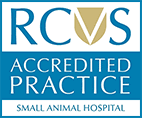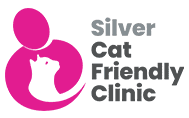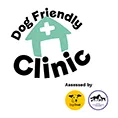Finding injured wildlife can understandably become quite the dilemma. How do I know it’s injured? Will it be ok? Where do I take it? I don’t want to put myself at risk. We know that coming across an injured wild animal can present a few questions, so we have tried to share some simple and useful tips for if you ever come across one. Please DO NOT ever put yourself or someone else in a risky situation, always assess the risk and if it is too risky DO NOT attempt anything, there are animal professionals for this.
Wild birds are the most seen wild animal here at Brentknoll Vets, ranging from pigeons to blackbirds to seagulls. If you come across an injured bird firstly assess the injury from a far if you can. Once you have seen where the injury is you will need to decide if it is a possibility to catch the bird without causing too much stress. If the bird has an injury such as an injured leg it is more likely that it will fly away.
If the injury is preventing the bird from flying away and you want to take it to a local vet then you will need to know how to handle the bird.
- Handling needs to be firm but gentle as you want to make sure you don’t cause any further damage.
- If you are dealing with a small bird: Place a hand over the bird so that its head fits between your forefinger and middle finger.
- The rest of your fingers will naturally wrap around the wings.
If you are dealing with a medium sized bird 2 hands is best: Place one hand over each wing.
Once you have pick the bird up it will need to be placed in a well ventilated covered box. The darkness of the box will help to reduce stress and will be the best first aid you are able to give to a wild bird.
Once the bird is secured CALL THE LOCAL VET, RSPCA or WILDLIFE CENTRE to advise them.
Small animals such as mice and hedgehogs are among the other wildlife we see. Most small animals you will be able to carefully pick up with gloves and place in a well ventilated box and take to your local vet/wildlife centre.
Hedgehogs however require a bit more attention. If you find an injured hedgehog and are planning on taking it to receive treatment there are a few things to look out for
- Make sure you are wearing thick gardening gloves or using a thick towel, even if the hedgehog isn’t curled up that can quickly change and can cause a lot of pain.
- Once you have grabbed the hedgehog make sure they are put in a DEEP box such as a cat basket with newspaper if possible on the bottom. Hedgehogs will try to escape so the deeper the box the better.
- Hedgehogs can get cold very quickly, if it feels cold to touch then try and put either a heat pad or hot wattle bottle in the box with it and wrap them in a towel.
- DO NOT give food where possible as this will cause them to use more of their energy, you can give them a small amount of water.
Whilst helping injured wildlife is extremely kind and compassionate we never want you to put yourself or anyone else at risk. Below are some steps recommended by the RSPCA that you follow when coming across a wild animal.
- DO NOT handle wild animals such as deer, foxes, badgers, snakes, swans, geese and birds of prey.
- Always wear gloves the thicker the better; this helps prevent infections and diseases as well as providing a barrier against injuries to yourself.
- If you do manage to catch a small wild animal always keep it away from yours and others faces.
- Even if you have worn gloves make sure you thoroughly wash your hands afterwards.
- Take care of the surroundings the wild animal is in and always assess the risks first. E.g. busy roads, water areas, packs/heard of animals.
If you do manage to catch an injured animal put it into a secure, well ventilated box and contact your local vet or wildlife centre ASAP.








